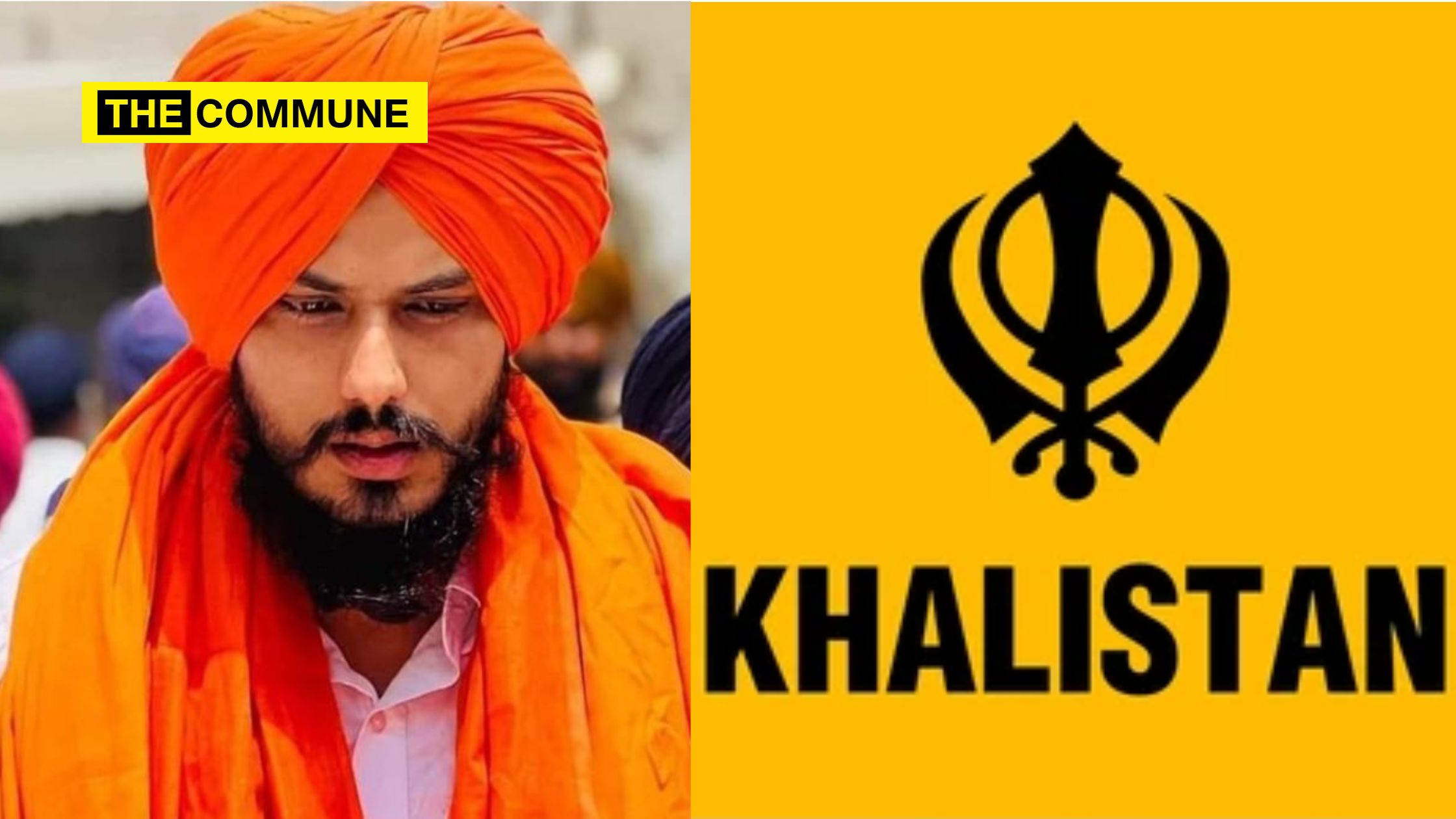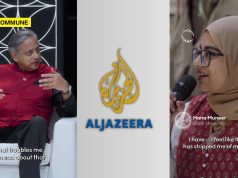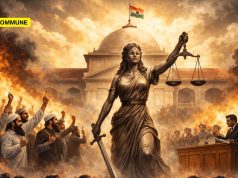
The worrisome rise of terror activities in Punjab, the resurfacing of the Khalistani movement, the massive manhunt for Amritpal Singh of the “Waris Panjab De” organization (“Heirs of Punjab”), vandalism of Indian embassies abroad, and a deeper look into the roots of the various Pakistani-propelled, promoted and financed Khalistani organizations around the world, have taken up the headline news space of all major Indian and some global media channels.
A clear Pakistani Islamist hand in the design of fanning separatist ambitions based on religion:
Many of these organizations fuelled, sponsored, and trained by Pakistan’s Islamists are militant, paramilitary outfits aimed at misleading and radicalizing Sikh youth in India and around the world. They include a long list of groups like the Babbar Khalsa International (BKI), The Khalistan Zindabad Force (KZF), The Khalistan Commando Force (KCF), Bhindranwale Tiger Force of Khalistan (BTFK), the Khalistan Armed Force a.k.a the Dashmesh Regiment, Khalistan Liberation Force (KLF), The International Sikh Youth Federation (ISYF), Khalistan Liberation Front, Khalistan Liberation Organisation (KLO), The All India Sikh Students Federation (AISSF), Khalistan National Army (KNA), Shaheed Khalsa Force, Khalistan Guerilla Force, Khalistan Security Force.
While groups of the militant variety are more obvious with their intent and actions, the sinister intent and modus operandi of Khalistani groups disguising themselves as “activists”, “human rights” or “minority rights” organizations are less apparent, yet more damaging in terms of slowly, subtly and steadily spreading misinformation and creating negative publicity for India. Groups in this latter category include Sikhs for Justice (SFJ) and the Organization for Minorities of India (OFMI) among others. US-based organization, Sikhs for Justice (SFJ) has become the most prominent pro-Khalistan group in the west and reportedly enjoys the support of Pakistan’s ISI. It calls itself a peaceful advocate of Khalistani objectives yet openly associates with convicted Khalistan terrorists and those suspected of being involved in terror plots in India.
The Khalistan movement is a separatist movement, seeking to create a homeland for Sikhs by establishing a sovereign state called Khālistān (lit. ”land of the Khalsa or the Pure”‘) in the Punjab region. The proposed state would consist of the territory which currently encompasses Punjab, India, and Punjab, Pakistan, with Lahore as its capital.
The movement is centered around two principal ideas:
1) a separate land for the Sikh religion, for, by, and of the Sikhs.
2) The ancient, historic land of Punjab comprising the Punjab region in India and the Punjab territories in post-partition Pakistan.
Guru Nanak founded the Sikh faith in the Punjab region of the northern part of the Indian subcontinent including a part of present-day Pakistan, at the end of the 15th century. He was the first of the ten Sikh Gurus. The tenth guru, Guru Gobind Singh, formalized its practices on 13 April 1699 and initiated Sikhs into courageously fighting for the right causes/ justice, starting with his own brave wars against the tyranny and unjust treatment of Hindus, Sikhs, and other Indic religions by the Mughal emperor, Aurangzeb. Historical theory and analysis suggest that Sikhism came into existence during the early Medieval period of the Bhakti movement and also after repeated invasions by Muslim rulers upon the Hindu community during Mughal rule, which lasted between (1526–1857 A.D) especially in the region of North India. In the undivided Punjab region, the eldest son of every Punjabi Hindu family was nominated and represented as a “Sardar” and vowed to protect his family and Indic communities from the tyrannies of Muslim rulers and their torture.
From Sikhism’s Hindu, Indic roots and values, its tryst with Islamic extremism, its brave stance against the cruelty of Muslim rulers… to the present-day situation of misguided Indian Sikh youth fighting against the Indian state rather than opposing an extremist, Islamic Pakistan….what has gone wrong?
The Khalistan movement peaked in the 1980-the 90s. Their violence included bombings, assassinations, kidnappings, selective killing, and civilian massacres. The movement resulted in nearly 22,000 deaths of Sikhs and Hindus alike, including approximately 12,000 civilians. The violence took on an international dimension in 1985 when Khalistani separatists based in Canada exploded a bomb on an Air India flight en route from Toronto to New Delhi, killing all 329 people on board, including 82 children under the age of 13. The Air India incident remains the deadliest terrorist attack in Canadian history.
The roots of the idea of “Khalistan” lie in the British colonial policies of the late 1800s and early 1900s that sought to divide Sikhs and Hindus, Sikhs were recruited into the British army in large numbers to use against Hindu rulers that rebelled against the British Raj. During the fierce debates around India’s Partition for the demand of a separate Muslim nation, India’s Congress party preferred “secularism” over a Hindu or Dharmic state but neither the promoters of Islamic Pakistan nor secular India considered the opinions of the brave Sikh people, whose ancestral lands (along with the Bengal provinces) were going to be the most impacted by the proposed partition of India, on the unjustified basis of religion.
Why didn’t a “secular” Congress party, its members like Nehru and Gandhi not consult with Sikh leaders, already anxious about losing their lands, homes, heritage, and some of their most revered religious sites? Why did they not listen to the concerns of the Sikhs and Hindus of the Punjab and Bengal regions and negotiate harder with Mohammed Ali Jinnah who did a stellar job of protecting Muslim interests at a huge cost to Hindu, Sikh, and other Indic people?
The ancestral lands of the Punjabi Sikh people were divided between an Islamic Pakistan and a secular India, however, India marked out a distinctly Sikh Punjab state, in the post Independence era which is in contrast to Islamic Pakistan’s Punjab province where both Sikhism and the Punjabi language are subservient to the majoritarian Islamic faith and its Urdu language. Post Independence, Sikh leaders longing for their ancestral Punjab provinces and their lost glory despite several sacrifices for the motherland, were encouraged and financed by Pakistan to focus on trivial grievances in India, while conveniently neglecting gross injustices in Pakistan – petty grievances like, the larger Punjab region in India being trifurcated into the states of Punjab, Haryana, and Himachal Pradesh in 1966, along linguistic lines (Punjab as a Punjabi speaking state, and Haryana and Himachal Pradesh as Hindi speaking states), which created suspicion and resentment amongst many Sikhs that Punjab was being further divided after it had already been divided and shared between India and Pakistan in the 1947 Partition of India. Interestingly, it was the latter division of Indian Punjab on linguistic lines that finally allowed for a Sikh-majority state, given the predominantly Hindu populations in Haryana and Himachal Pradesh.
Although these types of issues often mark normal center-state governmental differences in newly independent countries such as India, they were perceived by many Sikhs as religiously motivated policies of discrimination against them and were exploited by radical leaders, who built a narrative that Sikh interests would only be safe in an independent Sikh country of Khalistan. Such dangerous, victimhood ideas were further propelled by Pakistan’s army and Islamist/ terrorist groups, harboring an interest in destabilizing India. Feelings and perceptions of injustice, subjugation, and deprivation were further compounded by an “incendiary mix of unprincipled politics and the manipulation of religious identities and institutions” that brought radical, Pakistani trained & financed Sikh forces to the forefront of politics in the state of Punjab.
Whether the Khalistani movement may or may not have organically died out in the late 90s along with the new hopes and dreams of a different generation, is a matter of debate…but it was the Congress party’s / Indira Gandhi’s “Operation Blue Star” fiasco and its aftermath that left the Sikhs further embittered, resulting in a slow rise of various Khalistani movements, yet again…
‘Operation Blue Star’ was authorized by the then Prime Minister and Congress party leader, Indira Gandhi, and executed by the Indian Armed Forces between 1 and 10 June 1984 to capture/eliminate Jarnail Singh Bhindranwale, a Sikh leader and his followers from the buildings of the Golden Temple, the holiest site of Sikhism, in Amritsar, Indian Punjab. Officially released casualty figures were stated to be about 1500 people including army personnel, Sikh militants, and civilians. The unofficial figures were rumored to be much higher.
Unfortunately, the violence did not end there. A few months after Operation Blue Star, PM Indira Gandhi was assassinated by her Sikh bodyguards as avengement for the grave sacrilege committed at Sikhism’s holiest site. The aftermath of the assassination resulted in a bloodbath for the Sikhs of the Delhi region and a few other cities, supposedly orchestrated by Congress party supporters including some of its leaders. The 1984 Sikh riots resulted in the deaths of thousands of Sikhs. Government estimates reported the deaths of 2,800 Sikhs in Delhi and 3,350 nationwide, while independent sources estimate the number of deaths at about 8,000–17,000.
The Congress party’s Operation Blue Star followed by the Delhi anti-Sikh riots further alienated the Sikh community. What’s worse, the “secular” Congress party and its allies did not actively investigate the Sikh riots and ensure that the perpetrators were brought to book. This was a further insult to previous injuries. The Khalistani movement was now here to stay and grow in underground channels with the help of Pakistan’s ISI and Islamist groups!
Over the years, several interviews and de-classified papers have stated that Operation Blue Star was not necessary, certainly not in the manner it was carried out in the temple complex of the most revered spiritual site of the Sikh people, Amritsar’s Golden Temple complex.
Would the Congress and Indira Gandhi have dared to carry out a government special forces Operation within the premises of a Muslim holy site? Would the Muslims have tolerated it? Yet, the “secular” Congress and its allies have not shown the same reverence or hesitation towards Sikh or Hindu holy sites. If anything, Sikh youth should raise their voices, votes, and protests against the type of “secularism” that the “secular” parties of India practice. They will hopefully realize that Hindu organizations like the RSS and Hindu parties like the BJP have always respected the Hindu roots of the Sikh religion, revered its gurus and its customs, admired and appreciated the legendary bravery of Sikh soldiers as well as respected its distinct religious identity. The Sikh struggle should be against “pseudo” secularism of the Indian “secular” and communist parties, not against a Hindu party or the Hindu people that have always respected the origins of the Sikh religion, recognized the inherent courage of the Sikh people and lauded the contributions of the Sikhs towards India, Hinduism, Indic religions and Indic culture.
Click here to subscribe to The Commune on Telegram and get the best stories of the day delivered to you personally.




